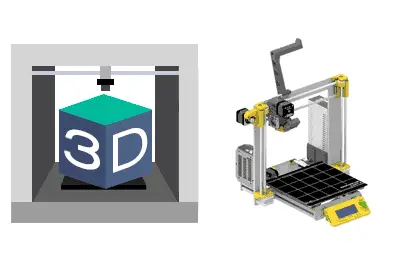We continue to see how our FFF 3D printer works, within our section dedicated to design for 3D printing.
In this introduction post we saw how a FFF 3D printer works and in the previous post how its kinematics work. Now it’s time to go into detail, looking at the main parts of a 3D printer.
We are going to talk about printers “in general”, without focusing on any specific model. Although, if you want, you can have the image of any of them, like the well-known Prusa I3.
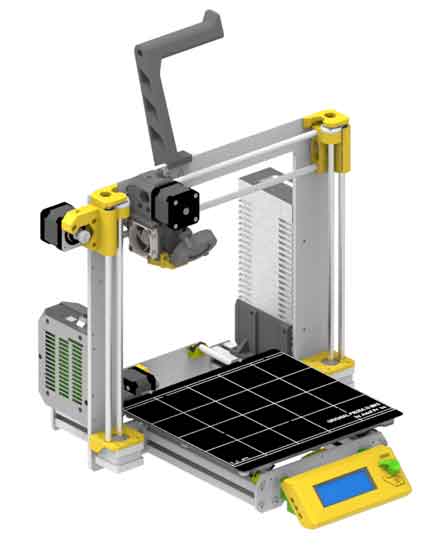 Speaking in general, we have already seen that the main objective of a 3D printer is to position the print head in a relatively precise position relative to the bed.
Speaking in general, we have already seen that the main objective of a 3D printer is to position the print head in a relatively precise position relative to the bed.
The bed is the surface where we will build our piece. Normally the bed is heated, to improve the adhesion of the piece (in fact, if it is not heated, you would have a hard time).
As we said, another fundamental element is the print head or hotend, the element that melts the filament. We will see it in detail in due course, but we advance that it contains an element that heats the plastic, and a sensor that is responsible for controlling the temperature.
Of course, at some point in the printer, either next to it, above it, or on a support on the table, we will have a coil with the material we are loading. The material is provided in the form of filament, wound on a plastic spool.
This filament is inserted into the print head by the extruder, which precisely controls the deposited material. The extruder can be located above the print head itself, or in the chassis. We will see the difference between both options in due course.
Finally, all of this has to be held in some way. And for that we have the printer chassis, that is, the set of profiles and structure that give body to the printer, and that supports the rest of the elements.
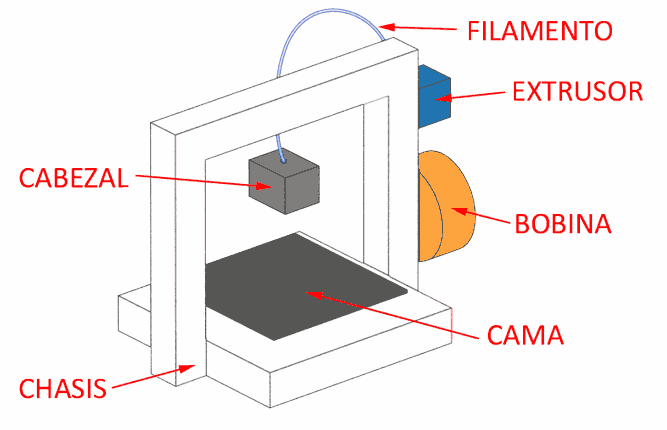
In addition to these mechanical parts, our printer has a series of electronic components. Of course, the electronics will vary from one printer to another but, again, they have many elements in common.
Logically, we are going to have a power outlet to connect the printer to the electrical network, which will be connected to a power supply that will provide power to the printer by converting the mains voltage to the voltages used in the printer (typically 24V, 12V, and 5V).
On the other hand, we have the electronics itself, responsible for controlling the operation of the printer. This includes the processor that runs the program, the drivers that control the motors, and the control of the thermal elements of the printer.
We will usually also find an SD slot to load the designs into the printer, and an LCD or TFT screen to display the status, and a keypad (or the TFT will be touch) to interact with the printer.
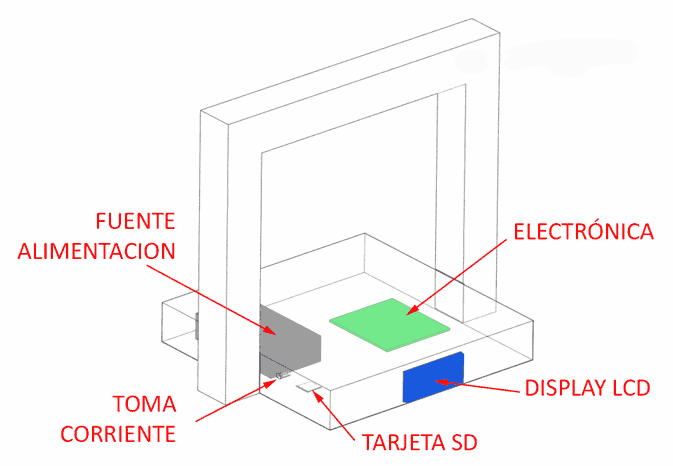
Now that we have presented these main parts, common to almost all home printers, we can “play” to identify them in the Prusa I3 printer that we presented at the beginning of the post.
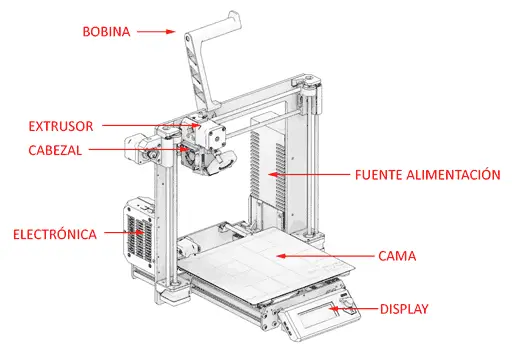
Thus, we easily identify the bed, the print head and the extruder (which in this case is mounted on the print head) and the support intended to hold the filament coil.
We also identify the power supply and the electronics, as well as the rest of the elements such as the display, and the SD slot.
We encourage you to identify the basic parts in other types of printers, like our friend Anycubic I3 Mega. You will see that, in reality, all printers are quite similar.
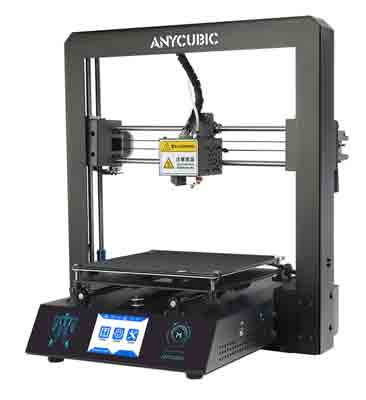
Now that we know how to identify the main parts of a 3D printer, in the next post we will go into more detail, seeing the different components that we will usually find in FFF 3D printers.
